
Chris Hector reports & Roz Neave took the photos
This is the 2013 George Morris Clinic. The timeless truths are the same, but the Master presents them with his usual skill, opening new insights and sharing his wisdom with us. I’ve been writing about George’s clinics for over 20 years – is there anything left to write about?
The basic message is always the same, but George Morris has this unique ability to present the old truths in new and exciting ways, and the man does it over and over again.
George Morris really is a living treasure.
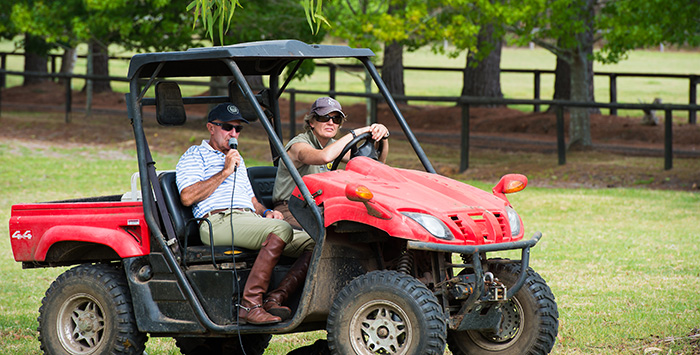
Vicki Roycroft has nurtured her GM clinics over the years, building a group of riders who come over and over again, and by now they have well and truly got the message: you turn up on time, with both horse and rider turned out correctly.
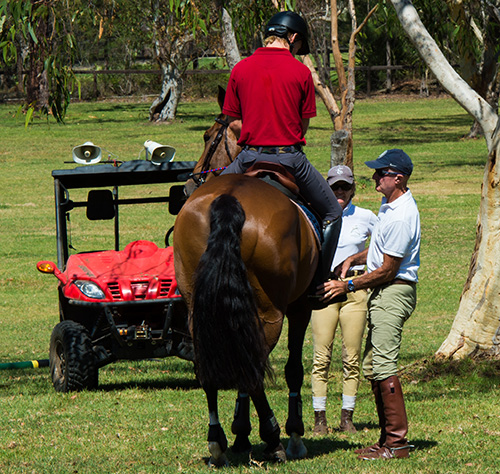
What I have done is a cut and paste on George’s words of wisdom, adding the comments from the later group to the first, to minimize repetition, although there are some things worth saying over and over and over again…
Every year, George has a central theme, and this year it is the importance of the inside leg to the outside hand, which is interesting since there was some criticism of the inside leg to outside hand concept on the grounds that this was an example of ‘clashing aids’ – which just happens to be a term George invented!
No way says George Morris…
“Legs are so important because of impulsion, which to me is the first lesson you give the horse, not rhythm. You lead a colt, you back a colt, will it go forward? My definition of impulsion is does the horse think forward? The second duty of the inside leg is the basis of collection. People think about the top of the horse when they think collection, but it is the inside hind leg that comes under the body shadow of the horse, that starts the back to front collecting of the horse. Nothing, nothing that I teach did I invent. I put things together maybe in an interesting package, but I didn’t invent any of this.”
“The inside leg to the outside rein is ancient history. One of my friends is very interested in ballet, and he said to me last year, George, it is opposition in the dance that creates balance. Inside leg to outside rein, puts the horse in balance – it makes the horse straight, and puts the horse in balance.”
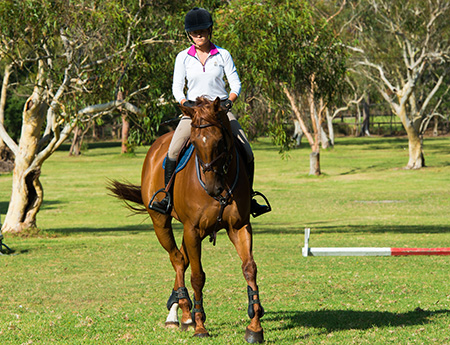
Jamie Winning and Alpha Centurion
Everybody in Europe teaches inside leg to outside rein, that’s not new. When I was 16, and I rode with Wätjen, I heard that concept, Bert de Nemethy taught, inside leg to outside rein for at least 55 years, I never thought it might be odd, or clashing aids.”
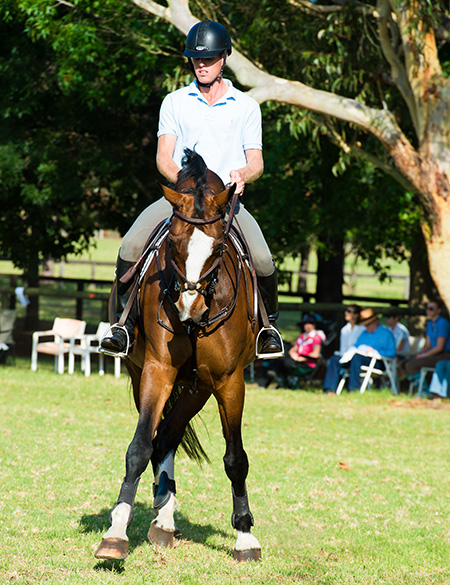
Todd Hinde and Pro Ratina
“I teach the inside leg for the canter depart, the counter canter, half pass, flying change. In the half pass – the inside leg is important . I am really stressing it for the flying change.”
next George talks about the importance of hand carriage
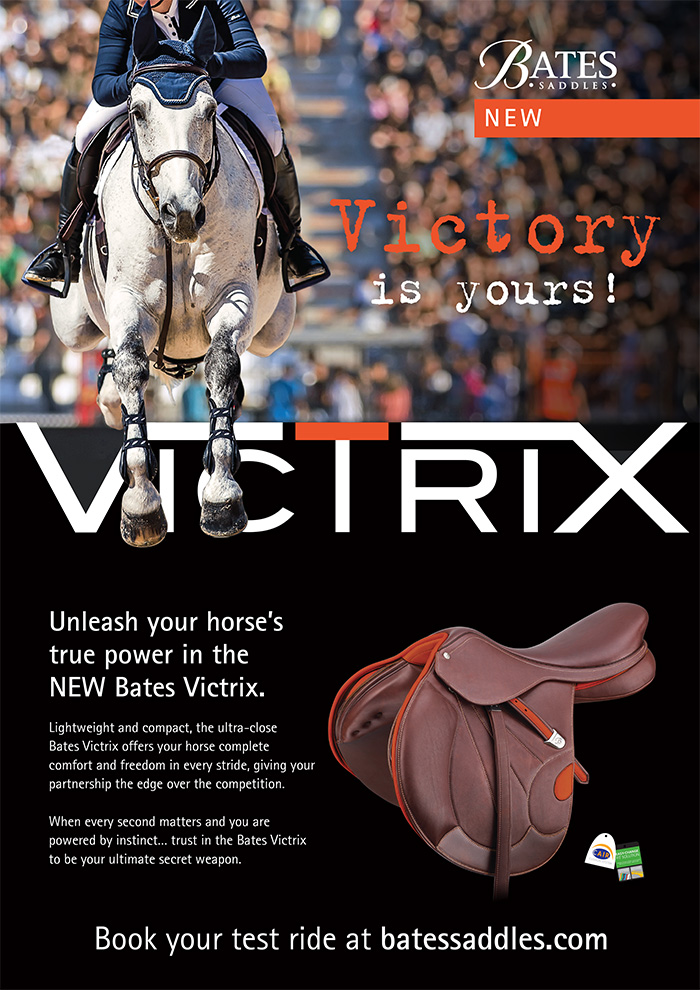
But woe betide any rider who tries to use hand to pull the horse’s head down:
“Carry your hands. If the horse gets above the bit, do not lower your hand, raise the hand, teach the horse that it cannot get higher than the hand. If the horse pulls – do not pull back, simply close your hand. It’s an old French idea, if the horse leans, close your fingers – DO NOT pull. Carry your hand and push the horse’s head down, hands quite high and perfectly symmetrical. Keep the contact and don’t freak out when he goes above the bit.”
“The biggest myth in riding is the low hand… You must carry your hand, a great example is McLain Ward, he has beautiful hands. I have a contract with the horse, I carry my hand, and you tell the horse, ‘carry your head’ – Bill Steinkraus taught me that. Problems are easy to fix – carry your hands and wait for the horse to accept. Contact is straight, steady, definite and supple.”
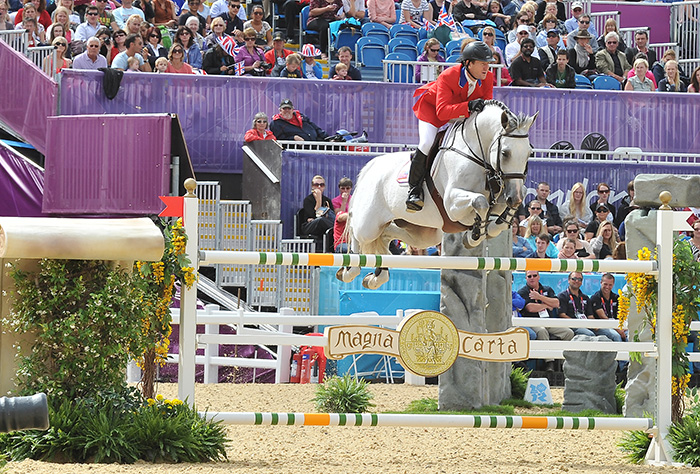
McLain Ward with Antares…
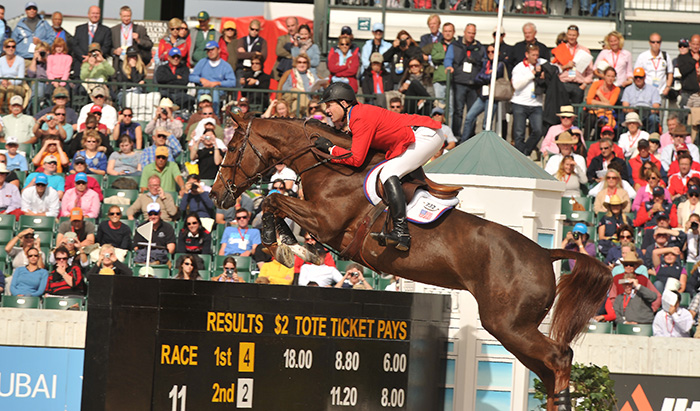
And Sapphire
Another of George’s pet hates is the heavy seat: “Don’t go by European Dogma, go by the horse, and the horse’s back likes a light seat. Have your body forward and slightly out of the saddle, lean forward so you are over your feet, and now ten strides posting, ten strides sitting, and ride a four loop serpentine.
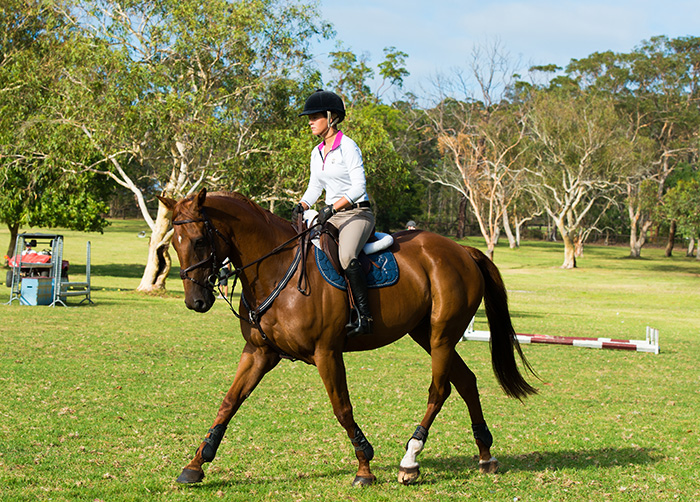
I love serpentines, they alternate the bend, and get you thinking about your inside leg. We bend the horse to engage the inside hind leg.
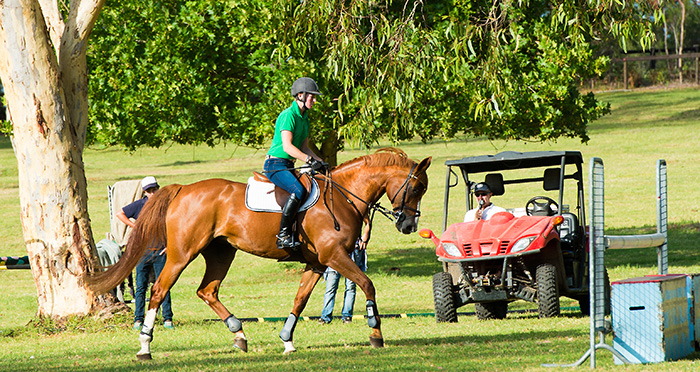 Hilary Scott and Oaks Miss Scarlet
Hilary Scott and Oaks Miss Scarlet
The basis of round is the horse’s inside hind leg. To get the bend, make sure your outside leg is at least a hand behind the girth.”
more follows
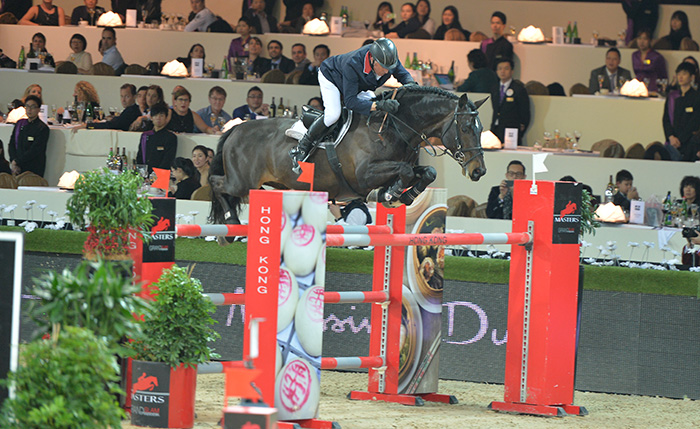
John Whitaker and Agento
“Get you upper body well forward. Why is John Whitaker special for horses? Because he rides very softly on their back. Heavy seated riding is hard on the vertebrae of the horse. Get out of the saddle and let the horse breathe in his back. The Europeans don’t preach this, but they practice it.”
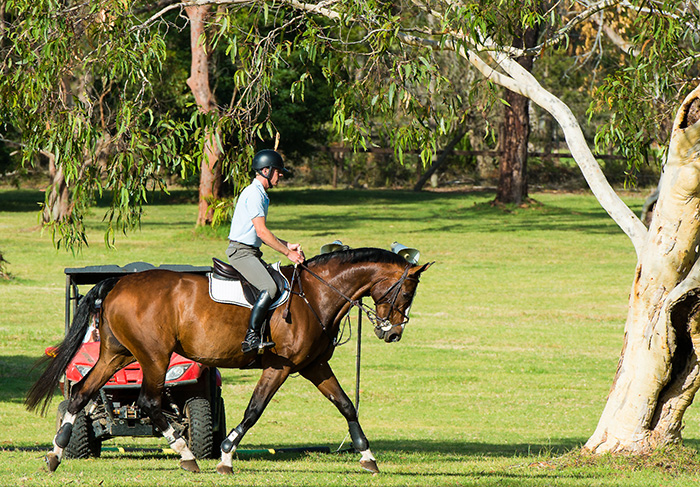
Todd and Pro Ratina
The work on the big circle is getting a little more complicated: “Do a little shoulder in, haunches in, alternate ten strides shoulder in, haunches in, get your horse dancing behind. As Kyra Kyrklund says, think of the shoulder in as a leg exercise. And after this exercise, make the horse straight and let him lengthen – you don’t have to push after the shoulder in / haunches in exercise, it is great for engagement.”
It was time to start thinking about obstacles and another of George’s themes – using the fence to make the horse back off and think and set itself for the jump:
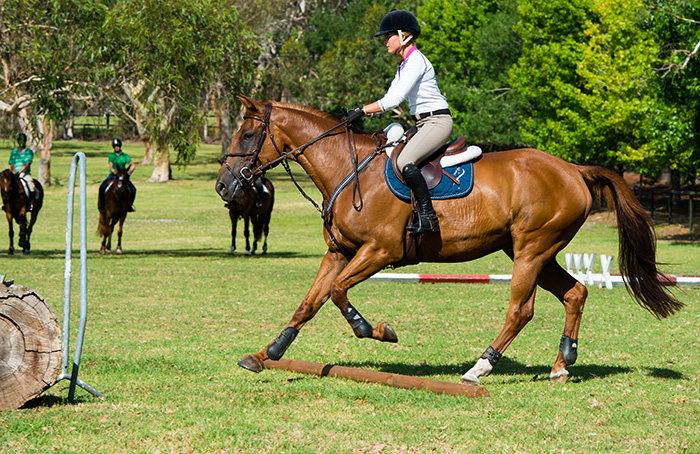
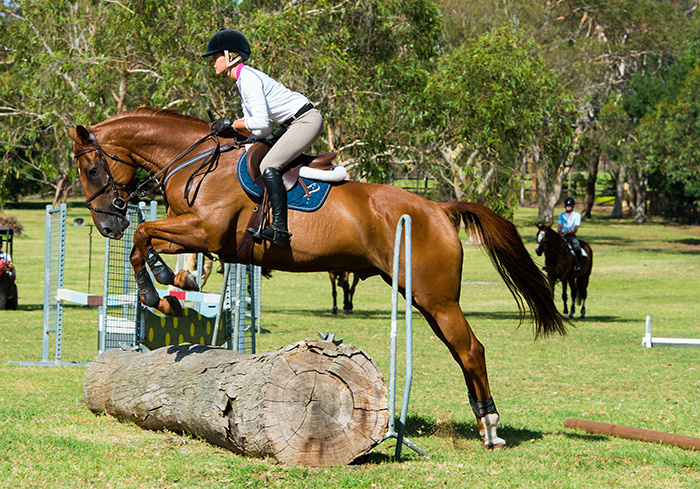
“I want the rail to set the horse back, so the horse doesn’t rush. I want the horse dying as it comes to the rail, I want the horse to have self initiative, I want him to associate the obstacle with slow down and set himself up.”
I put cavaletti in the flatwork as a bridge to the jumping. As you approach the cavaletti just freeze a little and the horse dies.”
Then it was time for some more work on the flat, and the emphasis was again on the rider’s inside leg: “We want the canter, the counter canter and the flying change, all from your inside leg. Teach your horse from walk to canter with your inside leg. When you ride the counter canter, make it super slow and shorten the horse’s base. When you use your legs DON’T raise your heel. Your leg is ineffective if your heels are up, that makes your calf muscle slack. What holds the stirrup in place is your heel. The outside of the stirrup should be slightly in front of the inside and close to your toe.”
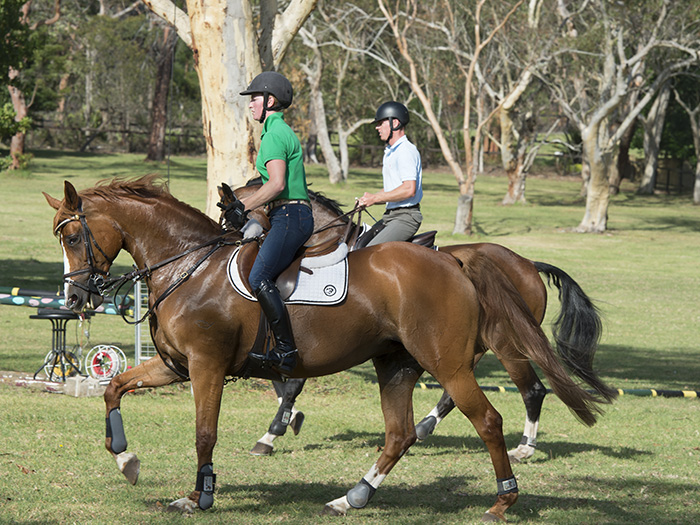
George has just turned 75 but he still rides most days, and he has selected Jamie Kermond’s Laughton’s Legacy as his ride for this session. The bay gets a rude awakening as George bangs him sharply with his legs, and the gelding shoots forward, for a while I thought he might end up in my lap:
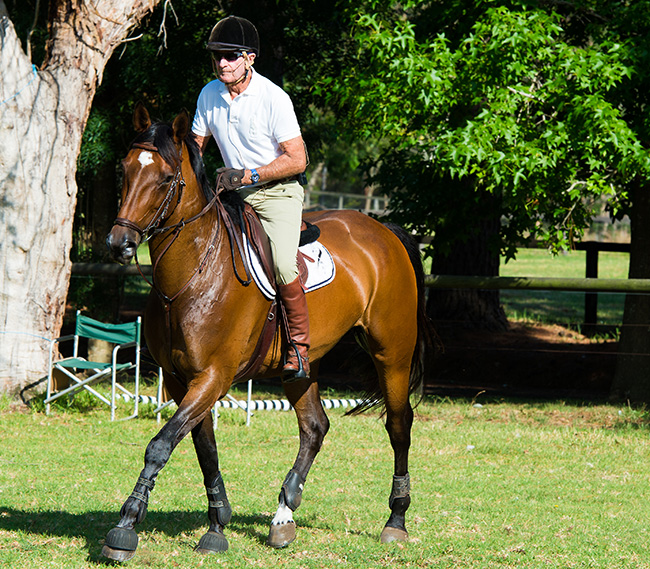
“That is the first lesson, the lesson of the legs, because it is the impulsion that drives the horse’s head down, not pulling. My hands are close together and slightly higher than the horse’s mouth. I’m not worried if his head goes up, I just keep contact in a straight line to his mouth. If the horse resists, don’t drop the hand, if the horse resists, do three things: close your hand, close your fingers and wait. The secret to getting the horse round lies in your calf – not in draw reins, which I hate.”
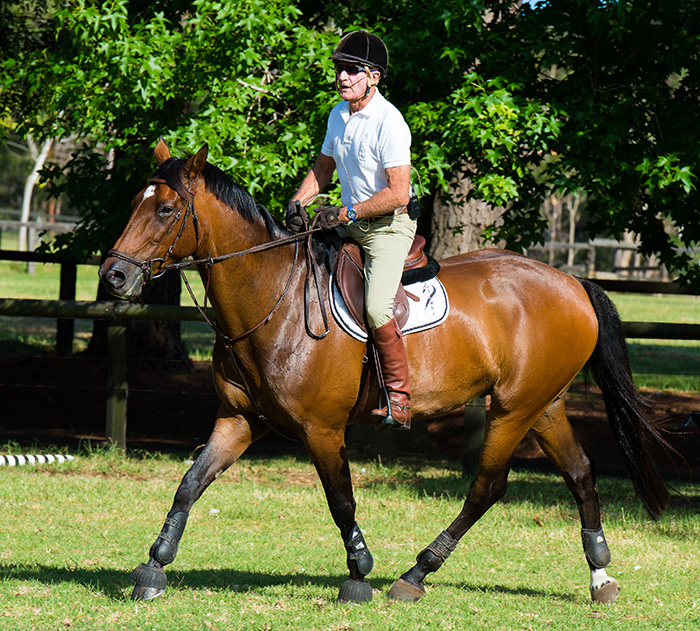
“There he put his head down. I didn’t ask, he offered, it was the horse’s idea to stretch to my hand. Watch the horse’s mind not just his body. You have to see content with every horse you ride, look at its face – is it content?”
Really this is one of the many uncanny things Mr Morris can do, after he has ridden a horse for a while it starts to look more intelligent…
As always, George really likes horses. “Wonderful horse”, he exclaims as he hands the bay back to Jamie. Not that Jamie is going to get it easy from George, for on the first jumping exercise, over a log, circle, over a plank, circle, he doesn’t like Jamie’s release:
“As we approach an obstacle, we soften our arm and our hands go down in the direction of the horse’s mouth. Jamie, I don’t want that crest release, put your hands down along the horses neck. My country overdid the crest release, there is nothing wrong with it in the beginning, but not at this level. People outgrow the crest release, you don’t see that excessive crest release in Europe, but it is endemic in my country.”
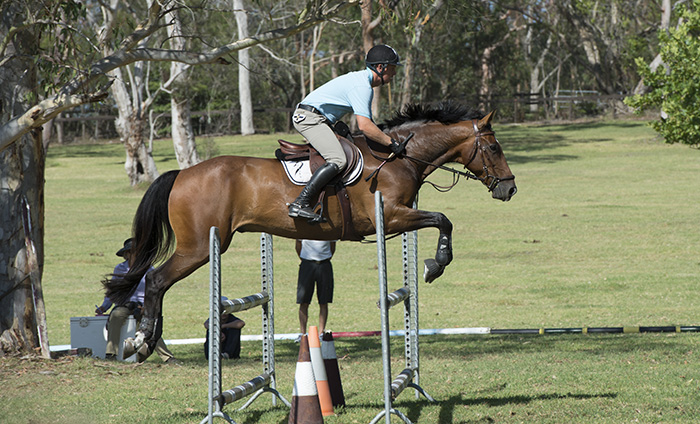
Jamie Kermond demonstrates the release George wants…
Jamie is still in trouble: “Don’t sit too deep, that’s some other clinic. What do you feel is different about the horse after I have ridden it?”
“He’s lighter in front.”
“That’s because of the work on the hind legs.”
Jamie is a quick learner: “Watch his hand, he has a super position in the air. It is details that make a super competition rider, details.”
And those circles?
“We want circles after every jump to collect the horse.”
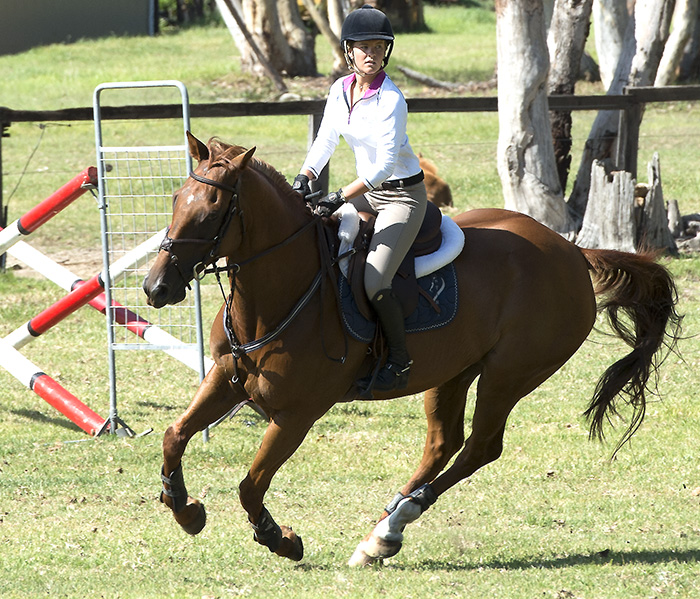
Circles then over the log, circle, over the plank, circle, over the vertical, half circle right, transition to trot, transition to walk, halt, rein back. And woe betide the rider who thinks he or she can jump the last jump, relax and slouch back to the line. “When you complete, do something, the horse is always in schooling, or un-schooling.”
It is the turn of Todd Hinde and Pro Ratina, and once again we see a feature of George’s clinics that has fascinated me, right from the first clinic I saw at the Victorian Equestrian Centre back in 1988, the way in which the courses and the jumps themselves school the horses…
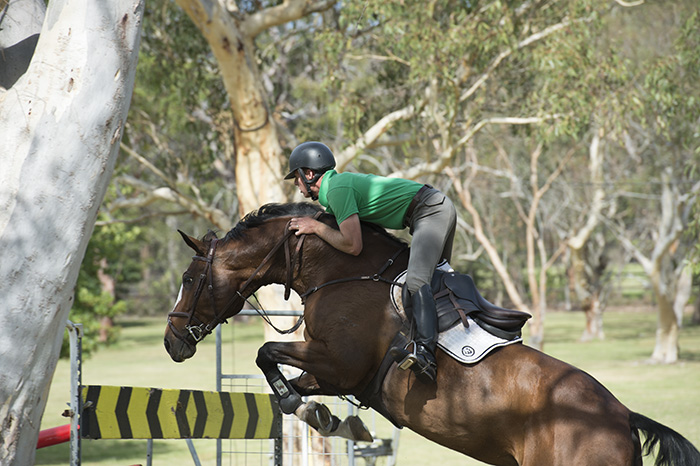
“Todd keep the horse straight and the horse will back up, that’s because I’ve constructed the course like that. Don’t help the horse with your hands, lock in and let her learn self sufficiency. Keep your hand down and invite the horse to hit the fence. Don’t worry if it tips every now and then. See she touched that fence – that is instructive, that is self poling.”
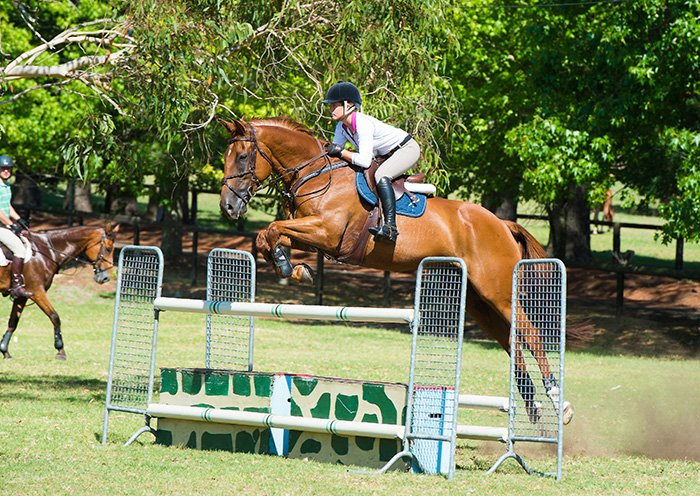
Jamie Winning is today’s teacher’s pet (lucky she keeps all that amazing blonde hair hidden under her cap…) “Look at Jim, she just keeps it even. She doesn’t chase. Bert de Nemethy used to say, ‘deep hand in the air’ – watch her hands they are perfectly even. This is the classic position that my country has forgotten. See how she keeps the horse perfectly straight, that forces the horse to shorten. If you let them drift, they can avoid the problem and they don’t learn to shorten.”
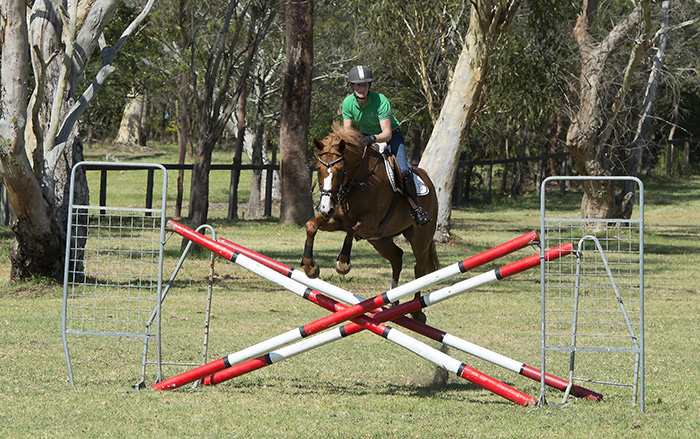
Hilary was in trouble for staying too deep in the saddle: “You sit too deep. I want you up and down, not too deep, when you need deep, you’ll be there. I want the fence to initiate the back up, not the rider. In competition you can hold her hand, but you don’t have to be doing it for her whole life…”
“On the first landing stride, half halt, just a little check, the half halt with your voice indicates to the horse, come backwards – but to go backwards, first you must let the horse go forward.”
“Watch the expression of these good horses. They are ‘conscientious’ – you have to get into the horse’s mind, his feelings.”
“With hot horses like this, you must ride with him, not behind him. Try to be not as quick and aggressive with your riding, stay forward and with him. These days they say SIT UP at a fence… but not Nick Skelton, not Rodrigo Pessoa, not Eric la Maze… they are forward riders. It is the same with Marco Kutchner and Marcus Ehning, they are very light German riders. They don’t teach it, but they do it.”

George likes the way Ben Blay is looking to the next fence: “That was exemplary. Once you see the distance you can think, turn. Light turning in the air. The horse has to listen to us but he has to watch and listen to the fence. For this type of riding, the horse has to be beautifully ridden.”
It is one of George’s great laments that rustic obstacles have disappeared from today’s showjumping courses but not from his clinics. George incorporates a ditch. Why? To test impulsion.
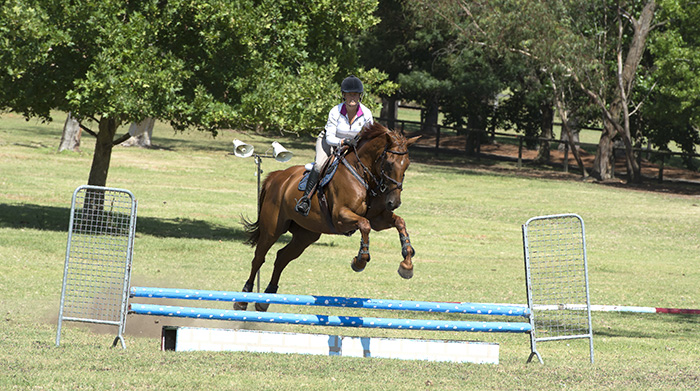
This time the riders are encouraged to sit deep, at least until they are sure of their horse’s reaction to the ditch: “Sit deeper, upper body erect, once you trust the ditch, you can ride with the horse. This is a test of impulsion – impulsion has nothing to do with fast. It is the horse’s brain. Is the horse thinking forward?”
Next George picks another horse to ride
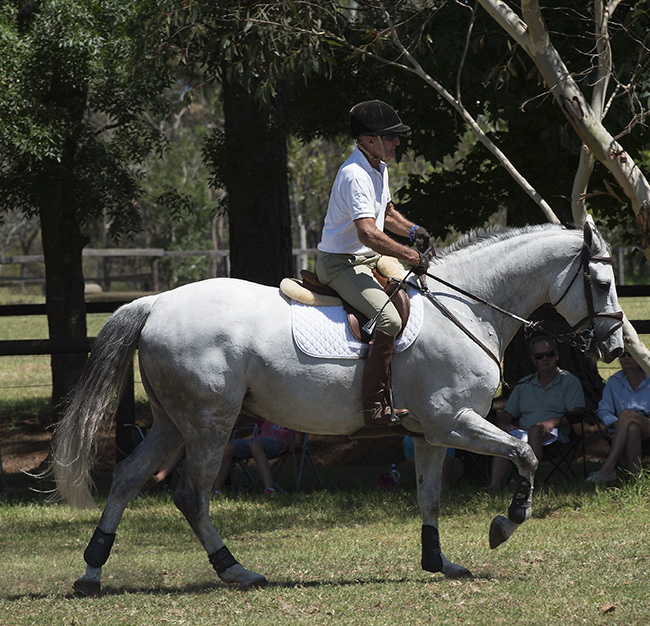
When he picks his ride in the second group – Jess Brown’s Casco – George once again stresses the importance of impulsion: “I like impulsion first. It is not the same order as the German training scale, but without impulsion, you can do nothing. First he answers to my legs. Second he answers to my hands. I teach him that he can’t escape my hand by going higher, that’s easy, I can always go higher, once he realizes he can’t get higher than my hand, then we have contact. The contact must be on the corners of the mouth – not the bar, the horses hate you to touch the bar.”
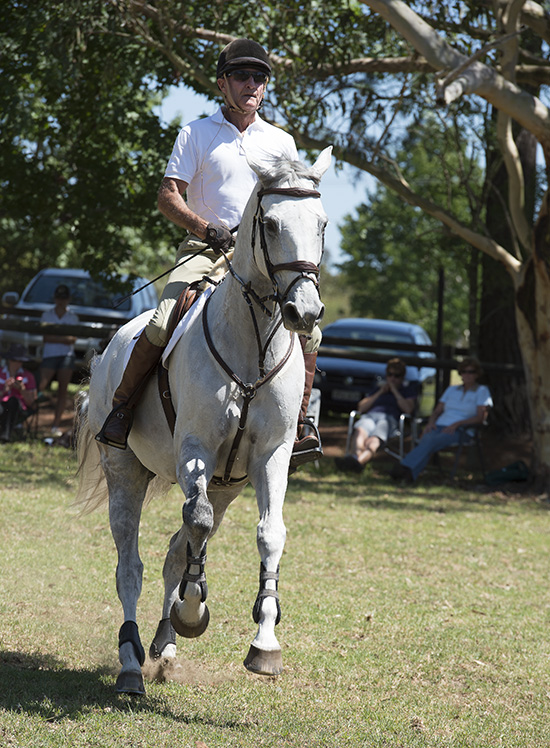
“My inside rein is my flexing rein, I am anxious to give not take. Oh, this is a canter to die for. Look at his face, he is happy. I’m not forcing for a competition – not force, force, force.”
“Now even when I walk him on the buckle it is with impulsion. This is not recess, even though I am resting him, I am educating him. I preserve the rhythm and the impulsion and the horse is ‘self-lively’. Horses very quickly learn evasions, they try to escape the seat bones, the legs and the hands, they have to accept these and also accept the voice, the whip and the spur.”
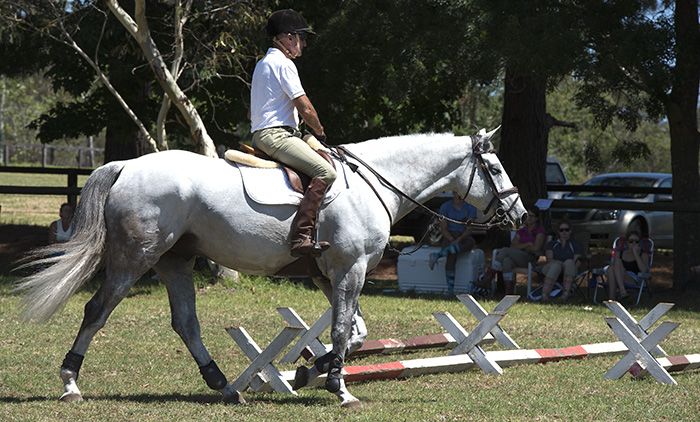
“Jumping is a reflection of the riding, the jumping can’t be better than the riding.”
“If the horse cross canters (disunited), don’t jump the next fence, circle and press with the inside leg. Don’t over-bend the horse on the circle or he will escape the aids. You mustn’t bend the horse’s neck in the flying change – inside leg to outside rein, then the horse will stay straight in the flying change.”
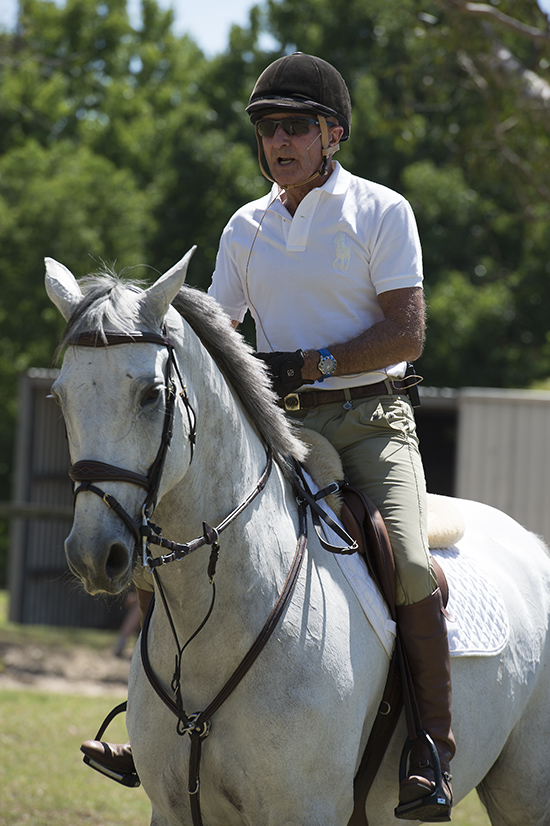
“I don’t care how strong the half halt is but then get off it. I don’t care how strong the flexion is, but then get off it.”
Jamie Kermond’s Yandoo Laughton’s Legacy, hits a fence, and Jamie is warned not to react:
“You have to be very cold when something like that happens. You are very hot blooded you Australians.”
“Don’t sit back after a horse lands, horses hate that, it hollows a horse. You don’t have to sit down for three point contact, just sink into the saddle. If you sit down you make them quick and hollow. Keep your body well forward, I want you to just squat in the saddle. Every horse will be rounder if you stay forward, stay forward like Beezie Madden, like John Whitaker and Nick Skelton. My system is big on legs and hands, the seat takes care of itself.”
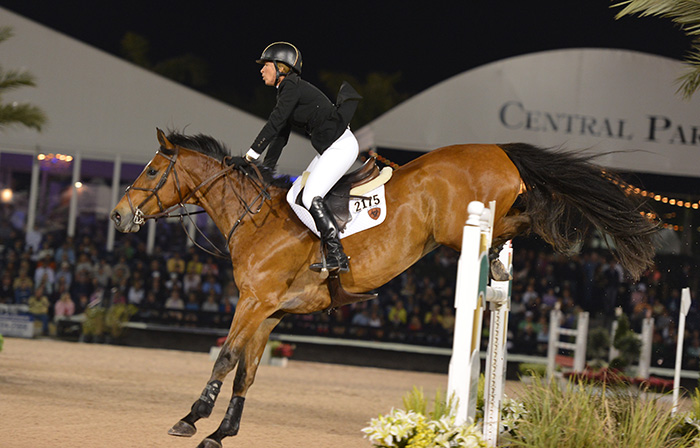
Beezie Madden and Simon
Suddenly you realize that the two two hour sessions have come to an end – George’s powers of concentration are really something else…
Breeding jumpers? Look at the to European bloodlines available from IHB – stallions like Diacontinus (Diarado/Contendro) – plus many more : www.ihb.com.au
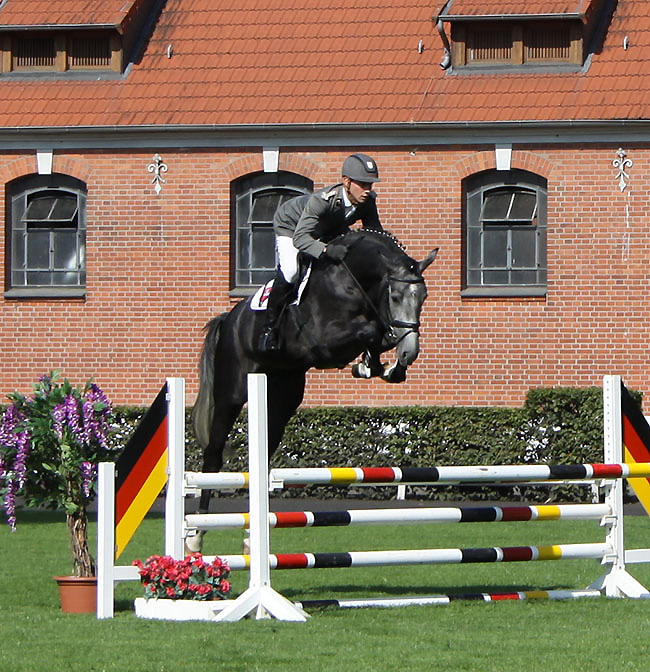


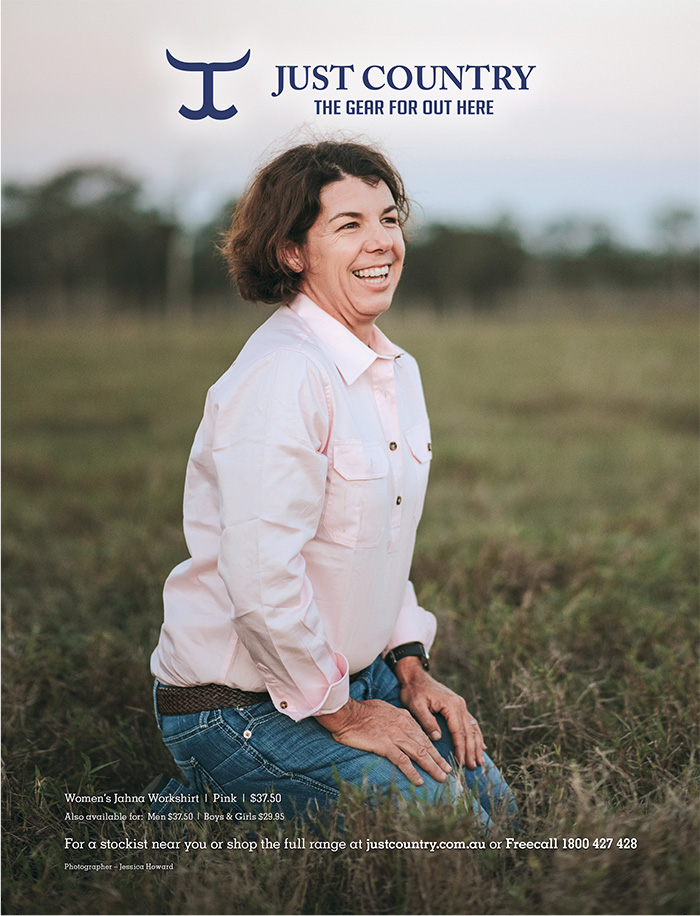
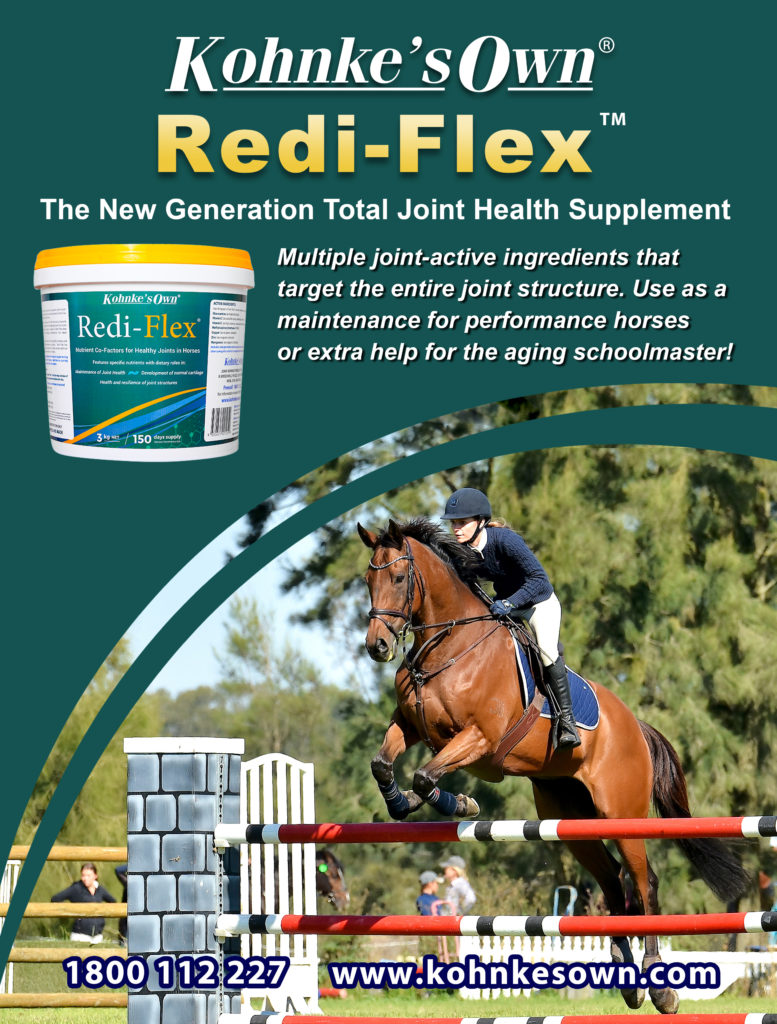
Love, love, love! I teach these same principals, even to the leadliners and beginning riders, creating good habits, proper position and a foundation and understanding on which to build from as they progress to the next level, setting my riders and horses up for success.